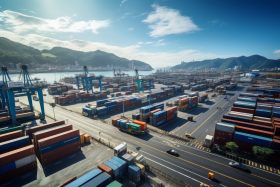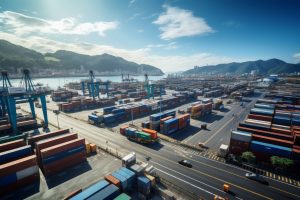Navigating Trump-Era Tariffs: Legal and Strategic Insights for Small Businesses
The shifting landscape of U.S. trade policy under the Trump administration introduced a wave of tariffs that caught many small businesses off guard. From increased costs on imported materials to sudden changes in supplier relationships, these tariffs created a complex web of legal challenges. For small business owners already working with limited resources, the risk of non-compliance, contract disputes, and regulatory hurdles has never been higher.
What are tariffs and where did they come from?
Tariffs are one of the oldest forms of taxation and are relatively easy for governments to collect. Tariffs have also long been used to raise revenue for governments and protect domestic industries from foreign competition.
Related Article: Small Business Exporters: Looming Risks
Tariffs are not paid by foreign exporters, as sometimes assumed, but by U.S. companies that import the goods. Over time, concerns about excessive protectionism, especially after the damaging trade policies of the 1930s, led to international efforts to reduce tariffs.
The General Agreement on Tariffs and Trade (GATT), formed in the post–World War II era, called for a substantial reduction in global tariffs, resulting in cuts to around 45,000 tariffs affecting approximately $10 billion in trade. The United States led these efforts, often lowering its tariffs more than its trading partners, a practice known as differential tariffs.
These unequal tariff rates persist today and have been a central focus of criticism by figures like Trump, who argue that they disadvantage American industries and need to be rebalanced.
How Trump’s tariffs will affect your business
The Trump Administration is trying to use tariffs as a multi-purpose economic and political tool aimed at reshaping both trade and domestic policy. By imposing steep tariffs, Trump seeks to make importing goods so costly that companies are incentivized to shift production back to the United States, creating American jobs and raising wages.
Beyond economics, Trump also uses tariffs as leverage in foreign policy, hoping to pressure countries like Canada, Mexico, and China into taking stronger action to curb drug trafficking and illegal immigration.
Legal implications of tariffs
Title 19 Section 1484 of the United States Code sets forth requirements for entry of imported merchandise into the US. Small business owners should pay attention to these requirements, especially with increased prices and uncertainty. When a product is imported into the US, the importer of record, usually the purchaser of the imported product, files its entry with Customs and Border Protection (CBP). In turn, CBP imposes tariffs based on the classification and origin of the imported product.
Two federal courts have recently ruled on a series of sweeping tariffs imposed by President Trump under the International Emergency Economic Powers Act (IEEPA). This law was historically used for imposing economic sanctions, not tariffs. These decisions cover the IEEPA tariffs which include the 10% worldwide tariffs announced on April 2 and tariffs on Canada, Mexico, and China related to immigration and fentanyl concerns. However, they do not apply to tariffs enacted under Section 232 of the Trade Expansion Act of 1962 (used for national security-related steel and aluminum tariffs) or Section 301 of the Trade Act of 1974 (targeting unfair trade practices, especially with China).
The Court of International Trade (CIT) ruled that Trump’s use of IEEPA to impose tariffs was unlawful, finding the statute does not authorize the president to implement “unlimited tariffs,” and that such action would constitute an unconstitutional delegation of legislative power. The court specifically noted that using tariffs to pressure foreign nations on immigration and drug trafficking issues, like fentanyl, does not directly address those threats and exceeds the scope of the law. Simultaneously, the U.S. District Court for the District of Columbia (DDC), in a case brought by two small businesses, concluded that IEEPA does not authorize the imposition of tariffs at all. However, that decision was not nationwide in scope.
Trump immediately appealed the CIT ruling to the Federal Circuit, which granted an administrative stay. This means that the government will continue collecting the disputed IEEPA tariffs for now.
What small businesses can do to mitigate damage
Trump’s unpredictable tariff policy created significant uncertainty for businesses, disrupted global supply chains, and roiled financial markets. The constant changes make it difficult for companies to plan, especially as tariffs could be imposed, modified, or revoked with little notice. Many U.S.-based companies are affected, as many rely on imported materials or components that became more expensive under the new duties.
This impact was especially pronounced for small businesses, which often operate on tighter margins. These businesses faced rising costs for imported goods and had to make tough decisions about how much of the increase to absorb versus how much to pass on to consumers. Tariffs also drove up overall operational costs, contributed to shortages, caused delays, and forced companies to reconsider their supply chains. In some cases, this led to increased domestic production and hiring, but the gains were uneven and often offset by higher prices, especially in industries where demand remained steady.
Additionally, with many countries enacting retaliatory tariffs against the US, it is important to understand the import side of your business, as well as the export side.
When preparing for a meeting with your lawyer, it is important to have these questions prepared:
1. What do you intend to import/export?
2. Where is it coming from/going?
3. Who will receive it?
Related Article: What Every Small Business Needs to Know about U.S. Export Controls
The Department of Commerce’s International Trade Administration has a CustomsInfo Database, where small business owners can use its Tariff Lookup Tool to use country tariff information for shipments originating in the US or abroad, a Landed Cost calculator, and export controls classifications.
Final words
If the CIT’s nationwide injunction is ultimately upheld, affected importers may be eligible for refunds. U.S. Customs and Border Protection (CBP) could permit importers to file Post-Summary Corrections or protests to recover unlawfully collected tariffs. If CBP denies refunds or delays action, importers can escalate their cases by requesting accelerated disposition under 19 C.F.R. § 174.22, preserving their right to judicial review within 30 days.
Do not panic buy. Prepare for things to cost more, but not immediately. There is so much uncertainty, with tariffs and court decisions changing the trading landscape every week. However, due to their production and materials needed, electronics and textile-based products are almost guaranteed to be more expensive.
See if your supply chain can be reorganized, or even tweaked slightly. Is it cheaper to import products with tariffs, or is it now cheaper to find domestic suppliers? Can you source similar products from countries that have lower tariffs?
If needed, increase costs strategically. This can be done through incremental price increases, or by only raising prices on certain goods/services.
Band together. Try to organize and cooperate with other businesses, order in bulk, and stay on top of supply chain snares.


